Kale is a nutrient-dense vegetable that can provide various health benefits to the body. Kale comes in purple and green hues and is primarily used in cooking. Kale is a plant that grows in different climates and can be found almost anywhere. Kale can withstand temperatures as low as -6°C, but it becomes challenging when temperatures exceed 26°C.
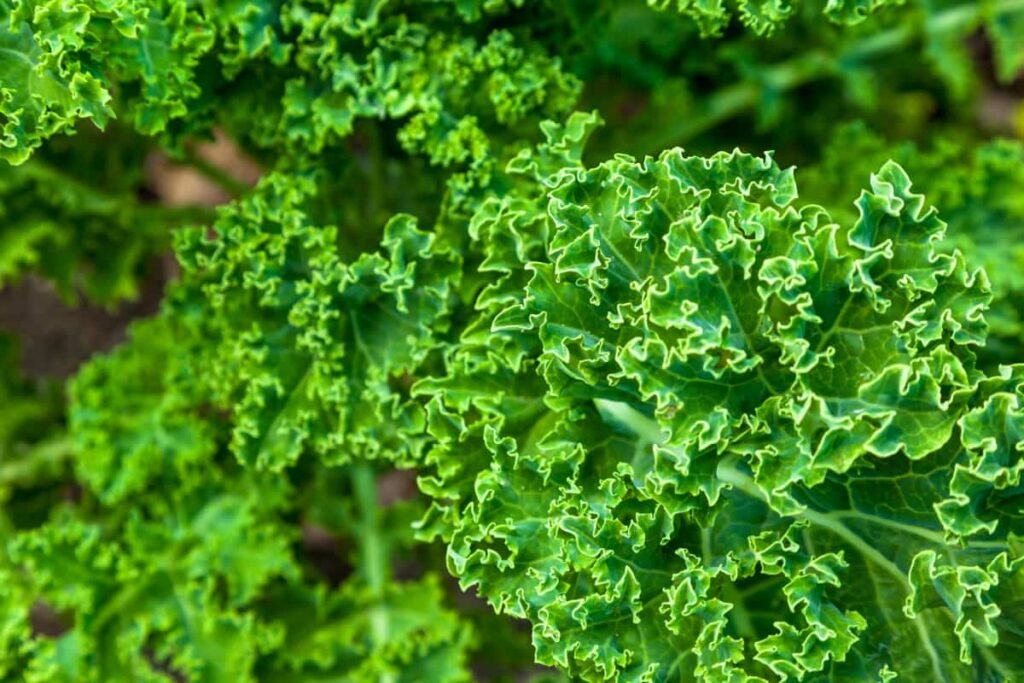
Kale should be planted in full sun during the cool season but in partial shade if planted during the hot season. In this article, we go through the good and bad companion plants of Kale along with its growing requirements.
Growing Requirements of Kale
Growing two or more plants together for mutual benefit is known as companion planting. Yes, it’s as easy as that. Companion planting is recommended because of its numerous advantages to the plants, soil, and environment.
Companion Plants Table of Kale
| Plant | Good Companions | Bad Companions |
| Kale | Buckwheat, Catnip, Marigold, Legumes, Alliums, Dill, and Cilantro | Sunflowers, Broccoli, Strawberries, Tomato, and Basil |
Suitable Soil for Growing Kale
Kale plants require a pH of 6.0 to 7.0 and rich, well-draining soil. Choose a pot at least a foot or 0.5 m in diameter. Plants should be spaced 12 inches apart in larger containers (30.5 cm). Mulch the soil with compost, finely ground leaves, weed-free hay, straw, pine needles, or finely ground bark to keep it cool and wet while suppressing weeds. Mulching will also assist in maintaining soil from splashing onto the leaves, ensuring a clean harvest. Kale can also be grown in a container indoors.
In case you missed it: Honey Bee Contract Farming in India: Current Trend, Schemes, Companies, Cost, Profit, Process, Agreement, Pros, and Cons
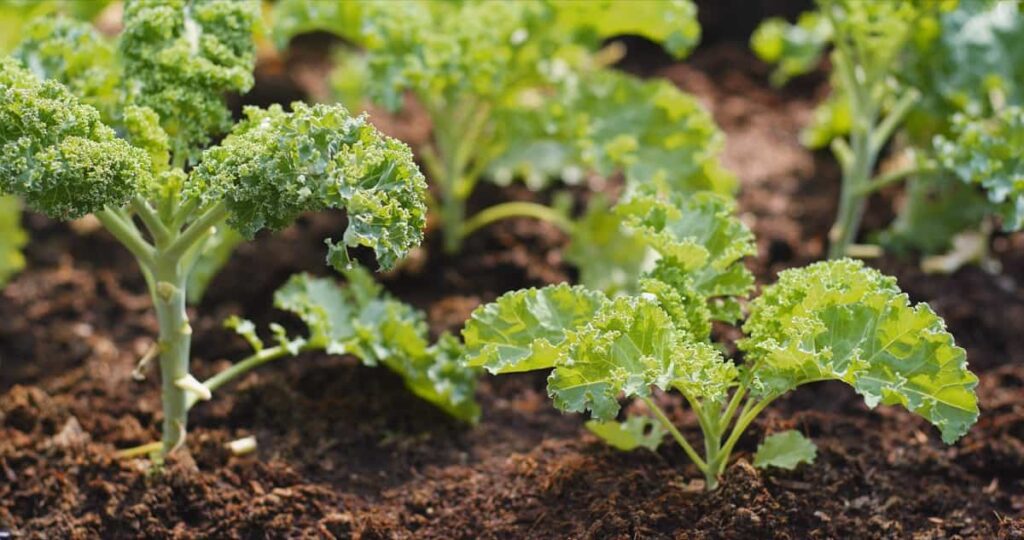
Sunlight Requirement for Growing Kale
Kale is one of the most nutritious shade-loving greens available, requiring only a few hours of sunlight daily to grow. Kale is also a cold-tolerant plant, making it ideal for harvesting in the fall. Kale thrives in full sun but can also thrive in moderate shade. Plants that receive less than 6 hours of sunlight each day will be less stocky and leafy than those that receive more, but they will still be delicious. Kale, like collards, thrives in good soil and produces soft leaves.
In case you missed it: Zone 6 Gardening Guide for Vegetables, Fruits, Herbs, Flowers, and Month-to-Month Calendar
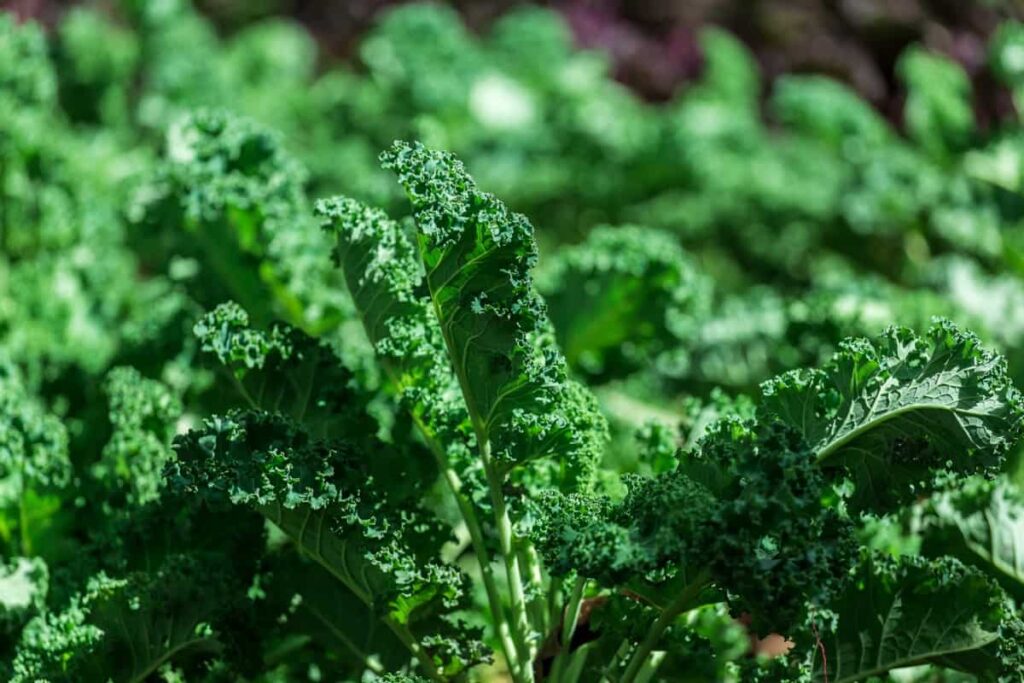
Water Requirement for Growing Kale
Because Kale grows very quickly, keep the soil moist by watering it 1 to 1.5 inches weekly. Regularly feeding plants with continuous-release plant food will help you get the most out of your harvest. Consider an indoor, water-based growing system for nutritious Kale all year. Water your kale plants daily to keep the soil moist but not soggy. Kale prefers 1 1/2 to 2 inches of water per week.
Fertilizer Requirement for Growing Kale
Kale, like cabbage, thrives when it is well-fed. Before planting, add plenty of compost to the ground. If your soil isn’t fertile, top it off with a balanced organic fertilizer like chicken manure pellets a week or two before planting.
Kale Plant Companions’ Role
- Insectaries: provide nectar, pollen, and shelter to predatory and parasitic insects.
- Repellents: repel pests by causing visual or olfactory disorientation.
- Fixers: Nitrogen fixers are plants that fix nitrogen in the soil.
- Light feeders: have low nitrogen requirements and will not compete for nitrogen.
- Covers: Ground covers serve as a cover plant, retaining water, protecting soil, and preventing weeds. Some can be dug into the soil as “green manure” at the end of the season to contribute nutrients and organic materials.
- Shade providers: provide shade as a form of protection.
Good Companion Plants to Grow with Kale
The cabbage family’s leafy green vegetable, Kale (Brassica oleracea), is a leafy green vegetable. Lacinato, red Russian, and dinosaur kale are some available varieties. Plant kale separately from other brassicas (such as Broccoli, Kohlrabi, Cauliflower, Brussels sprouts, and Swiss chard) to avoid pests and illnesses. These are some of the best companion plants to cultivate with Kale:
Buckwheat
Buckwheat is a ground cover that traps moisture in the soil and buries weeds, allowing your Kale to thrive. Buckwheat also attracts helpful insects and improves soil nitrogen levels.
Catnip
Catnip is an excellent companion plant that repels pests and attracts beneficial insect predators, which can help a range of veggies and flowers. Plant catnip in your yard to keep pests away from your Kale.
Marigolds
Hoverflies that feed on aphids are attracted to marigolds and sweet alyssum flowers, which keep them away from your kale plants.
Alliums
Alliums like chives, shallots, and even leeks prevent pests that eat kale leaves, such as flea beetles, cabbage loopers, and aphids.
Legumes
Legumes of all kinds increase the nitrogen concentration of the soil around your Kale, making it more fertile. You can grow healthy, tasty Kale by planting pole or bush beans in your garden.
Dill
Dill isn’t just a terrific pickling ingredient and a great companion plant for Kale and other veggies. Dill not only draws pollinators that help plants flourish, but it also attracts helpful insects that eat pests. Planting dill near kale seedlings will protect them as they grow.
Cilantro
Cilantro is an excellent kale companion plant because it attracts beneficial insects such as hoverflies, which eat pests like aphids.
What Should You Not Grow With Kale? (Bad companions)
While there are many plants that Kale may grow and benefit from as companion plants, there are some species that Kale cannot tolerate.
Sunflowers
Sunflower is an excellent companion plant but doesn’t thrive well with Kale. This is due to the presence of compounds that are detrimental to the metabolism of kale seeds. This chemical may prevent Kale from germinating.
Broccoli
Surprisingly, Kale and any of its relatives cannot grow together. Cauliflower, broccoli, Brussels sprouts, and other similar vegetables fall under this category. This is because they are both prone to the same pests, infections, and other ailments. Planting them together will result in an influx of diseases, bugs, and other pests, stifling their growth and development in the long run.
Strawberries
Strawberry and Kale aren’t a good match for each other. They don’t get along when they’re planted next to each other. Pest attacks are common on Kale, and strawberries should not be grown near plants that are sensitive to pest infestations.
Tomatoes
Tomatoes and Kale are antagonistic to each other. Because Kale grows close to the ground, tomatoes block sunlight from reaching it, preventing it from growing
Basil
Although basil is a wonderful herb, it does not work well with Kale. Basil has a strong minty flavour that will impact the flavour and taste of your Kale if planted with it.
In case you missed it: How to Earn 1 Lakh Per Month from Tulsi: 1 Acre Holy Basil Cultivation/Farming/Production Project Report, Cost, Profitability Analysis
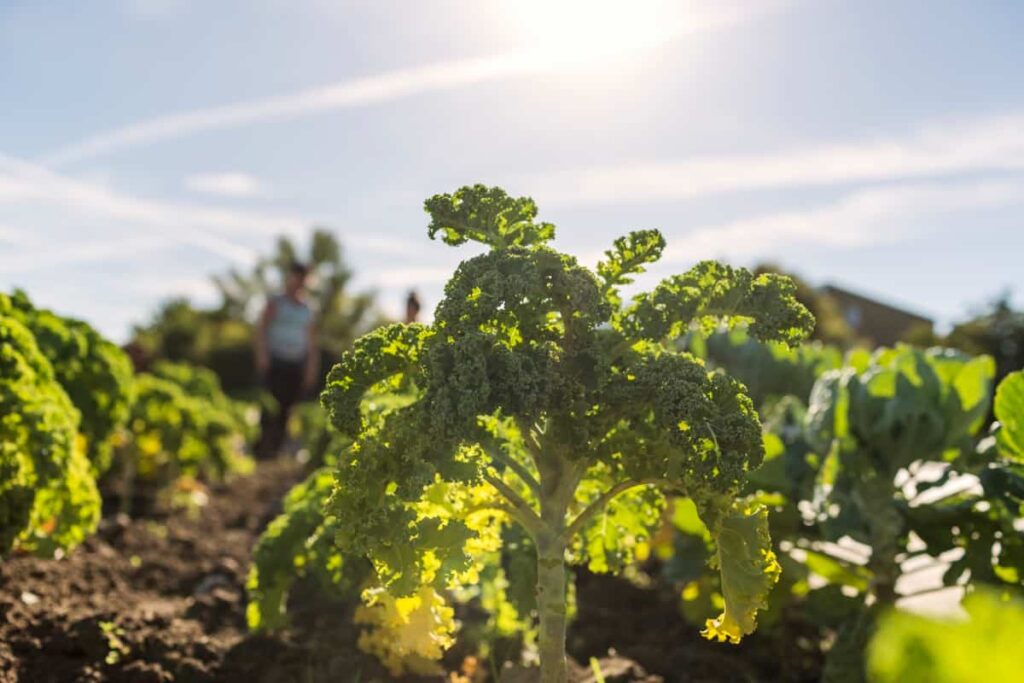
Frequently Asked Questions About Kale Companion Plants
What Can’t You Grow Near Kale?
Plant kale separately from other brassicas (such as Broccoli, Kohlrabi, Cauliflower, Brussels sprouts, and Swiss chard) to avoid pests and illnesses.
What Are Some Poor Kale Companions?
Planting Kale alongside other brassica family members is likewise a bad idea. Broccoli, cauliflower, cabbage, Brussels sprouts, bok choy, and collards should be kept away from Kale. Pests that attack one plant species are more likely to attack the other brassicas if they grow together.
Is It Possible to Grow Spinach and Kale Together?
Because they have similar growing requirements, Kale and spinach grow nicely in a mixed winter greens garden. The plants develop swiftly; both greens usually are ready to harvest in around 50 to 70 days.
What Amount of Sunlight Does a Kale Plant Require?
Kale is one of the most nutritious shade-loving greens available, requiring only a few hours of sunlight daily to grow. Kale is also a cold-tolerant plant, making it ideal for harvesting in the fall.
Is Kale Able to Sprout After Being Cut?
Kale is a cut-and-come vegetable that grows back to renew its leaves for several harvests when harvested carefully. Harvest the oldest leaves first, those on the outside of the plant at the base, to encourage your Kale to regrow.
How Do You Harvest Kale Such That It Continues to Grow?
When picking Kale, pick the outer leaves first and leave the smaller interior leaves to continue to grow. Don’t cut the stem off at the top; this will stop the plant from growing.
In case you missed it: How to Start Organic Garden from Scratch at Home: For Terrace, Pots, Raised Beds, and Indoor
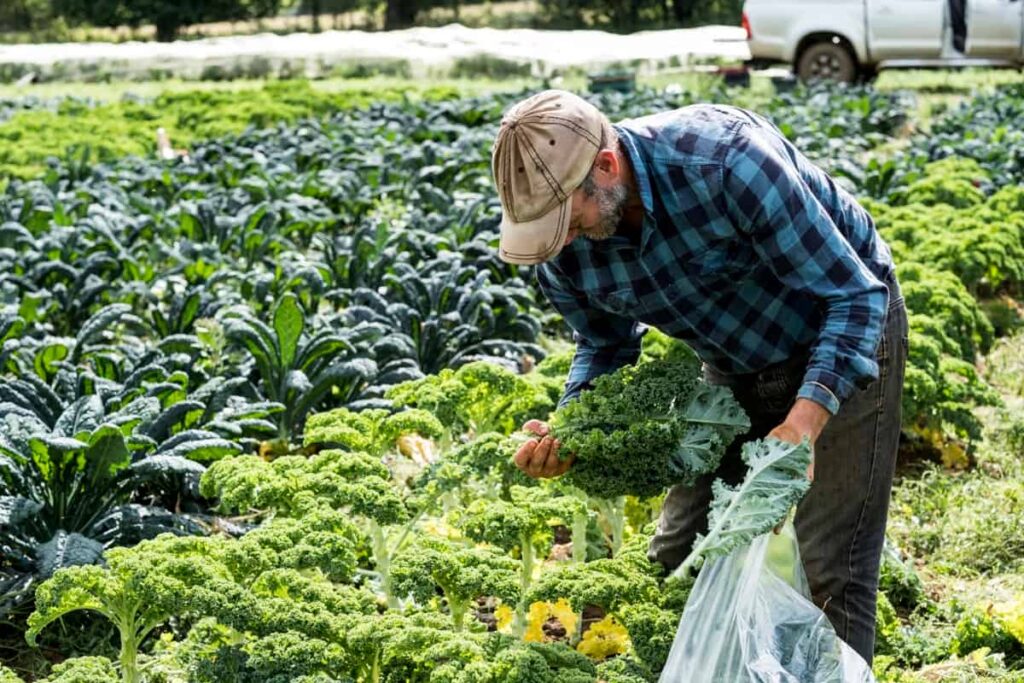
Conclusion
Kale is a wonderful leafy vegetable to grow in pots and ground. You must be aware of what can be grown along with Kale as good companion plants. Hope this blog post will help you grow Kale.
- Aquaponic Farming at Home: A Step-By-Step Guide
- Profitable Village Farming Business Ideas in 2024
- High-Yield Aquaculture: Fast-Growing Fish for Farming
- Effective Fish Pond Construction Techniques for Beginners
- Irrigation and Water Management in Pineapple Farming
- Blossom to Harvest: Mastering Flowering and Pollination in Papaya Farming
- Pig Fattening Essentials: From Selection to Sale for Beginners
- Raising Wagyu Cattle: A Complete Guide for Premium Beef Production
- Soil Types and Their Water Holding Capacity
- Optimizing Irrigation Schedules for Coconut Groves for Enhanced Yield
- Espresso Your Garden: Coffee Grounds for Healthier Acid-Loving Plants
- The Best Soil Mix for Snake Plants: How to Mix Your Own Snake Plant Soil
- Green Thumb Success: Expert Tips for Cultivating Greenhouse Beans All Year Round
- Bloom All Year Round: The Ultimate Guide to Indoor Hyacinth Care
- Eco-Friendly Gardening: How to Make Liquid Fertilizer from Kitchen Waste
- Ultimate Guide to Grow Anise in Pots: Explore Seed Propagation to Harvesting
- Guide to Raising Chester White Pigs: Discover Breed Facts to Growth Management
- Mastering the Elegance: The Ultimate Guide to Weeping Cherry Tree Care, Planting, and Maintenance
- Ultimate Guide to Planting Garlic in Grow Bags: Growing Strategies for Beginners
- How to Fix Spider Plant Leaf-Related Problems: Natural and Organic Remedies
- 10 Reasons Why Your Tulsi Plant is Shedding Leaves: Home Remedies and Solutions
- Optimizing Growth and Yield: The Advantages of Palm Bunch Ash Fertilizer
- Utilizing Neem Oil Extract as a Natural Pesticide for Hydrangea
- From Soil to Harvest: Various Ways in Which Farmers Can Use AI Tools
- Steps to Encourage and Induce Citrus Flowers: A Comprehensive Guide
- How to Fix Snake Plant Leaf-Related Issues: Natural and Organic Remedies
- Transform Your Garden into a Fragrant Oasis with Raat Ki Rani (Night Blooming Jasmine)
- Discover the Ideal Chicken Breeds for Philippine Farms
- How to Create a Poultry Egg Farm Business Plan for Profits
- Grow Lemon Cucumbers Like a Pro: Insider Techniques for Bountiful Yields
- Ultimate Guide to Caring for Your Pink Princess Philodendron: Tips for Thriving Variegation
- Areca Nut Profit Per Acre: Calculating Yield and Cost of Cultivation
- How Kaveri Chicken is Becoming a More Profitable Breed in Indian Backyards
- Transform Your Barn: 9 Steps to Convert a Horse Stall into a Chicken Coop
- Exploring Suffolk Sheep Disadvantages with Limitations and Challenges
- Guide to Solving Potted Lemon Tree Problems: How to Revive Lemon Tree in Containers
